| Architect |
Enric Miralles
& Benedetta Tagliabue |
| Date
Built |
2005 |
| Location |
Av de
Francesc Cambo |
| Description |
|
Jonathon Glancy writing in the Guardian on
August 8, 2005, described the renovated
Santa Catarina Market as, "... a
glorious thing. Here is a retail food
market, utterly unlike a morgue-like
British supermarket, glistening with
fresh fish and seafood, bloody with
skinned rabbits and poultry, gleaming
with fruit and vegetables, set under a
suitably theatrical roof. Appropriate,
not just because the newly re-opened
market is a the kind of vivid public
space dreamed of by soulful city
planners and big-spirited architects,
but also because this is the city of
Gaudi, the saintly patron of a
much-admired urban culture that thrives
on surrealism in architecture. The
hundred or so market stalls housed in
this three-level structure, close to the
city's medieval cathedral, dedicated to
Saint Eulalia, the Lusitanian martyr,
are covered with a great, wave-like roof
adorned with a magic carpet of 325,000
colourful ceramic tiles lifted on
writhing, and intertwining, steel
columns."
Unfortunately, to fully appreciate these
waves of vibrant colours you need to be a
pigeon or to be looking down from the top of
the cathedral.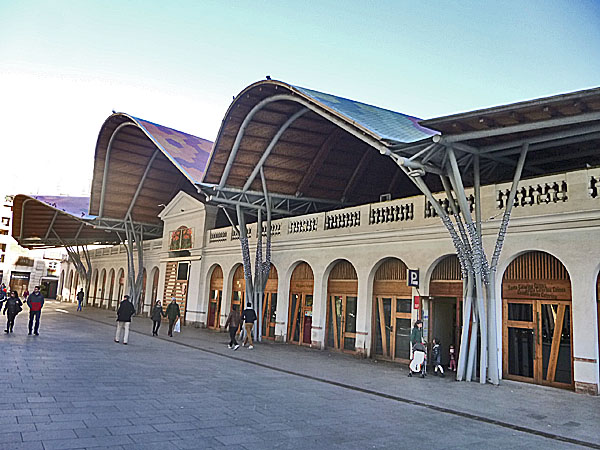 As you can gather
from the outside walls, this is not a
new market. The Santa Caterina
Market was actually built in 1845 to
serve the local "blue-collar"
community. It occupied the site of
the former Convent of Santa
Caterina.
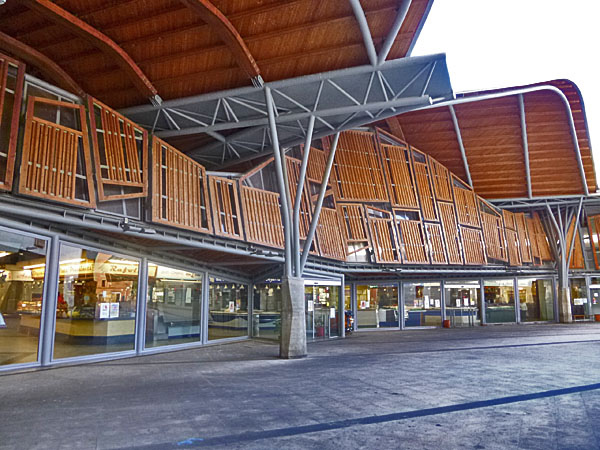 The journey from
brief to completion for this building
was a long one as Johnathon Glancy
explained, "... The architects
were asked to squeeze together the
revived market, the plan of which
was constantly changing, a museum,
two blocks of 59 low-rent social
housing for senior citizens, an
ambitious underground car park for
articulated lorries serving the
market and 250 cars together with an
"organic waste depository" for the
Santa Caterina and La Ribera
districts of the city centre. All of
which is rather like being asked to
erect a circus Big Top in the
kitchen while builders are busy
working on the rest of your house.
And the garden shed, too.
Somehow, all these disparate elements fit together happily, as these things do in Barcelona; but, to make life more difficult, and interesting, for everyone involved, building works on the market uncovered the foundations of a substantial Dominican monastery that had been torched by anti-clerical Catalan revolutionaries in 1835. Alongside these were the remains of what is thought to be the first wholly Gothic church in the city, dating from 1241, and, to keep the archaeologists digging, ruins of a late Roman necropolis. The market nailing a lid on these ghosts of the city's past was built between 1844 and 1848. A century and a half later, this building was creaking like some antique ship well past her sail-by date, which is where EMBT came to the stuttering, halting rescue. The answer was to house the whole market under an ambitious and eye-catching roof, to provide both generous and uninterrupted shelter and a colourful sense of identity and place." 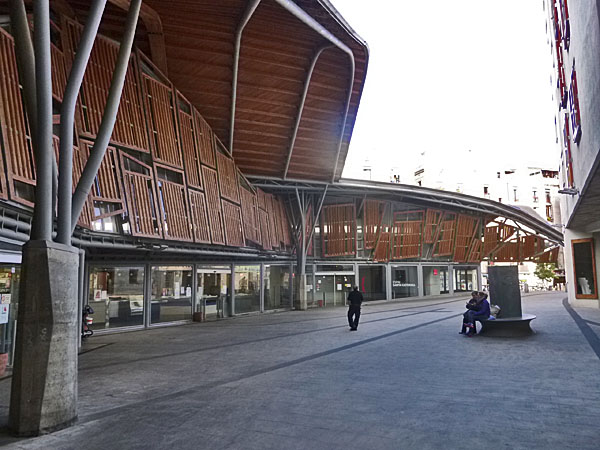 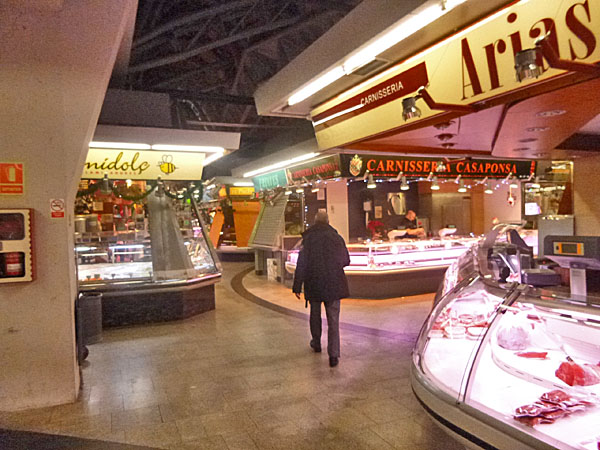 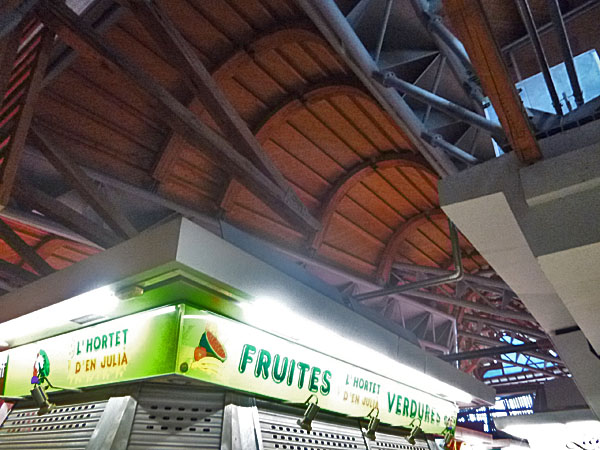 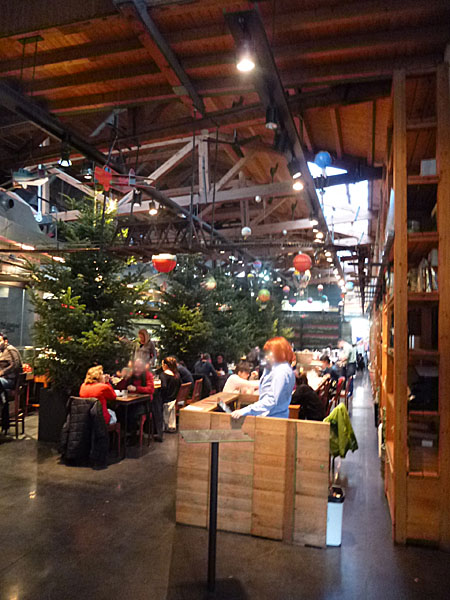 |
|
|
Santa Caterina Market,
Barcelona, Spain
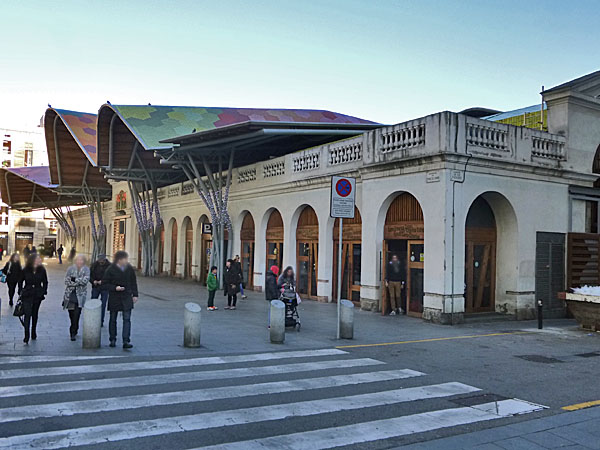 |
